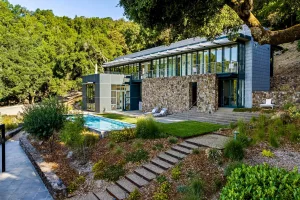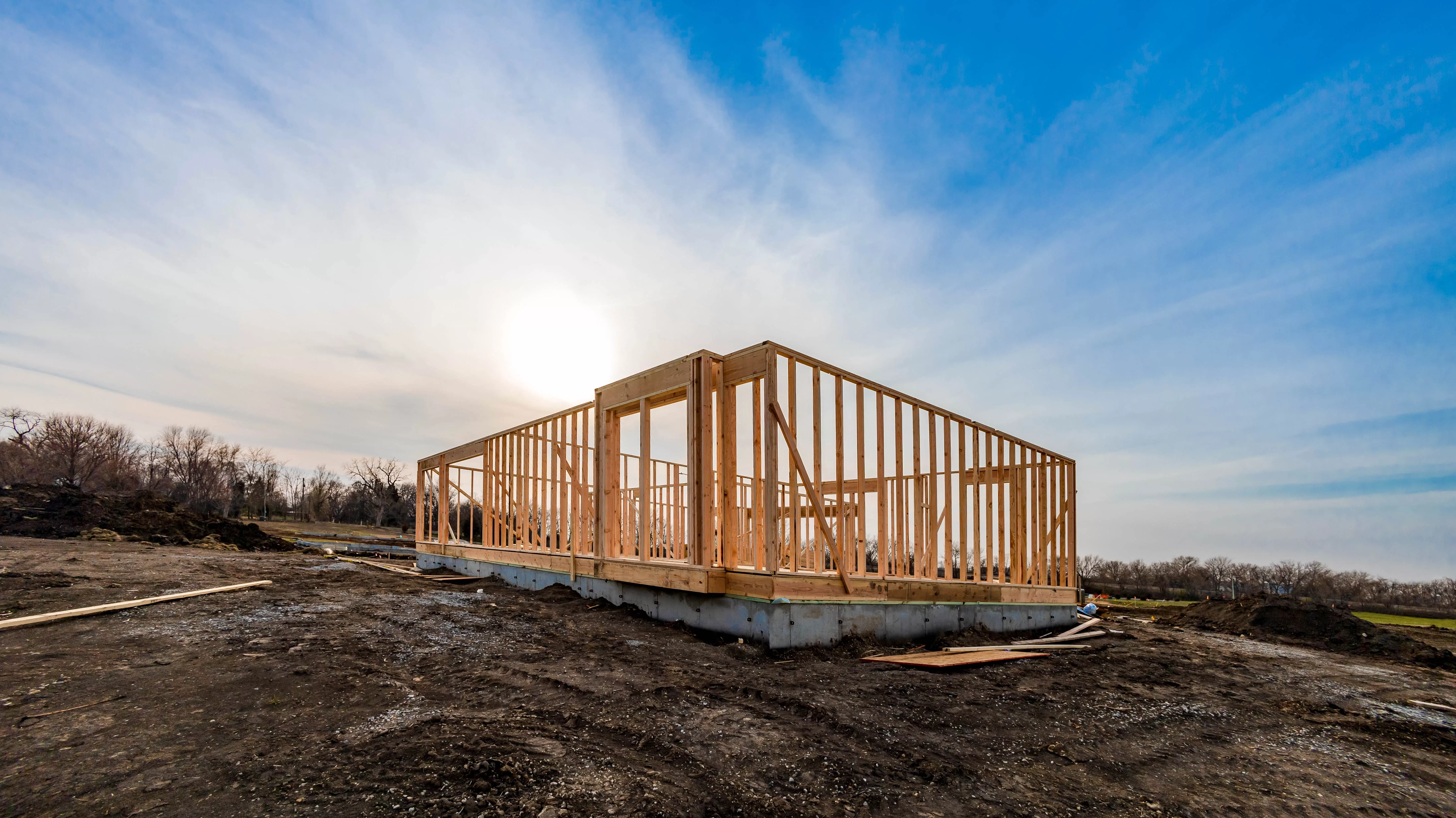With construction costs high, North Bay property owners are waiting for the Federal Reserve to decrease interest rates before talking to contractors. They are concerned they will not see a return on investment on new buildings if they sell. Despite such hesitancy, the North Bay is seeing comparatively more construction than other parts in the Bay Area, especially San Francisco. The North Bay has constructed a great deal of multilevel residential housing in metropolitan areas. Local property owners are also making progress building on wildfire-affected lots.
“Individuals buying and building new homes today are either people of means or taking a longer-term approach,” says Jason Lorenz, senior vice president and regional manager of commercial banking for construction for Bank of Marin, which is based in Novato.
Inflation is another reason for the slowdown. Costs for materials and labor and costs for fuel have increased sharply in the past 18 months.
“The combination of these factors is a recipe for developers and builders to press the brakes. A decrease in interest rates will open more doors,” says Lorenz.

Already approved and fast-tracked projects could see more progress between the late spring and early fall, depending on weather and fire conditions. It is also good news that increases in materials prices are not as dramatic as at the start of the pandemic. Prices for lumber and steel are technically higher than in spring 2020. Yet, compared against the current value of the dollar, they are lower than they were when the pandemic began.
“This is remarkable because a lot of manufacturers and suppliers shut down during the pandemic. Plants for finished products like cabinets also closed. A percentage of businesses and facilities never reopened. Given these concerns, it is fortunate that builders have been able to find materials and supplies to continue work,” says Tony Simmons, owner and president of Nordby Construction in Santa Rosa.
In response to rising costs, some North Bay property owners have reduced the scale of projects. For example, a number of wineries decreased the size of new tasting rooms. This was also because wineries saw direct-to-consumer sales increase early in the COVID-19 pandemic. Other property owners are proceeding ahead with their original plans.
“If you want a new space like a wine cave to increase storage capacity and guest visits, it’s a gamble to wait for interest rates to drop. Next year you could miss out on gains,” says Simmons.
Starts set to rise, but home renovation is ongoing
In 2024, nationally, construction starts are expected to increase 7%, with a $1.2 trillion forecast , according to the Dodge Construction Network (DCN). DCN is a Massachusetts-based company that offers predictions about the commercial construction industry. Spending on nonresidential building is expected to be lower overall, with only a 4% increase, according to the American Institute of Architecture .
This means many of the starts will be in housing. Locally, there is still great demand for renovation, says Dan Weaver, vice president of sales for Healdsburg Lumber Company.
“With interest rates high, homeowners can’t change residences easily. So many locals are fixing up their homes. The numbers aren’t as big as they were early on in the pandemic. Homeowners still want to make their yards and decks ‘private paradises.’ They’re also remodeling kitchens and bathrooms,” says Weaver.
Another trend is to expand living rooms, as well as upgrade the “pretty parts” of homes, like cabinets, windows and trim, says Chris Gaylor, contractor sales manager for Healdsburg Lumber Company.
“We’re in a bubble in Sonoma County, especially in affluent areas like Healdsburg. Many newcomers are arriving from other parts of the Bay Area and the East Coast. The houses they are buying tend to be older. They require new siding and wood replaced due to dry rot or water damage. Also, rural homes tend to need more repairs. This is more common after heavy winter and spring rains,” says Gaylor.
Letitia Hanke is the owner of ARS Roofing, a Santa Rosa-based roofing company. She says the 2023 fall and winter storms caused so much damage North Bay residents had to prioritize roof repairs and tree removal. Such decisions meant putting other improvements on hold.
Some property owners’ lag to renovate is also related to the demand and cost for roofing materials. The 2023 storms affected most populated areas of California. Roofers, builders and developers have seen roofing materials costs increase every few months.
Labor concerns increase total costs
In January 2024, the minimum wage for all California workers increased to $16 per hour . The 50-cent increase since 2023 makes it harder for general contractors to turn a profit. In addition, a survey of approximately 65 members of the Associated General Contractors of America who build in California said factors relating to labor are significant concerns.
pWinter 2024 progress on Valle Verde, a multifamily apartment building under construction in Napa, by Burbank Housing. [Photo courtesy Jocelyn Lynn]
Lack of training typically leads to losses. An employer must choose between training workers while paying them or completing fewer projects. Simmons says the COVID-19 pandemic helped general contractors become more flexible.
“When many people in the company had to work remotely, it showed us we could be effective by mixing things up,” says Simmons.
The changes led to companies becoming more resilient. This has helped firms cope with inflation.
Still, the U.S. construction industry will only meet demand this year if it attracts 501,000 more workers on top of normal hiring. The estimate comes from a model from Associated Builders and Contractors, a national trade organization that represents the non-union construction industry.


Hanke is also the founder and executive director of the Lime Foundation, a Santa Rosa-based nonprofit that runs the NextGen Trades Academy (NGTA) roofing and construction vocational program. NGTA offers three weeks of training for 16- to 24-year-old underserved youth from Marin and Sonoma counties.
There are other local programs like NGTA, such as the North Bay Construction Corps’ partnership with the Marin Builders Association. These trainings ease the labor shortage. They also benefit young people by helping them determine what trades and skills they want to learn.
“Many students in the NGTA program are interested in careers in green building, renewable energy and sustainability. This involves learning how to install technologies like smart appliances and LED lighting. Our classes go beyond the basics of working with steel and insulation,” says Hanke.
The NGTA program typically graduates eight classes of students a year, with between 15 and 20 students per class. Hanke and her colleagues say many more trained workers will be needed in the next decade.
Predictable as well as surprising costs for affordable housing
The growing demand for renovation and general contractors’ motivation to work with high-end customers makes it more difficult for property owners with less cash to complete work. Low availability poses a problem for affordable housing, says Robert Eyler, professor of economics at Sonoma State University.
“Local governments should not want to be builders. The solution is for local governments to form more partnerships with private sector developers. Governments can do more to provide incentives and pathways for projects to be completed,” says Eyler.
Rohnert Park and Solano County serve as models for streamlining affordable housing construction.
“Other communities, especially well-off areas in Marin and Napa counties, struggle with affordable housing construction. For decades, local residents have said new affordable housing will not fit the character of their areas. Residents also feel they will build units and there will not be enough demand for them,” says Eyler.
In 2023, Burbank Housing, a Santa Rosa-based developer, saw construction bids come in at the expected estimates as well as some lower estimates. Burbank Housing builds affordable housing and permanent supportive housing (PSH) in Napa and Sonoma counties. PSH is defined as housing with on-site social services for people who formerly experienced homelessness and/or have physical disabilities and chronic health issues.
Jocelyn Lin, director of housing development for Burbank Housing, says it is rare to see bids come back lower. She adds Burbank Housing appreciates it when local general contractors work with them to combat inflation, supply shortages and additional expenses related to weather delays.
Lower bids have helped Burbank Housing manage project budgets amid other rising costs such as insurance.
“In recent years, the costs of insurance have skyrocketed. It has been tough to find companies who will insure properties dedicated to permanent supportive housing,” says Lin.
Lower bids have also helped Burbank Housing deal with specific supply chain issues. One of Burbank Housing’s general contractors is Midstate Construction in Petaluma.
Wesley Barry, vice president of project management for Midstate Construction, says manufactured materials and equipment that depend on electronic circuit boards and chips are increasing in cost. The rise is occurring at a pace greater than that for other materials.
“Along with the cost increase, the demand versus the availability of these goods is significantly impacting construction schedules. That in turn also increases costs. This impact is widespread as it affects numerous components, including things like fire alarms, automated door operators and irrigation controllers,” says Barry.
For new starts, one of the critical components is electrical distribution panels. These panels bring power to a building. The scarcity and potential delay for electrical distribution panels impacts overall project schedules.
“On one of our projects, we placed the order for the switchgear as soon as we executed our contract with the owner. This was prior to the loan being closed and before we were able to break ground,” says Roger Nelson, president of Midstate Construction.
Occasionally Midstate Construction has finished a project ahead of the arrival of the switchgear.

Monica Nelson is the vice president of marketing and business development for Midstate Construction. She says the majority of projects now include installation of solar panels or preparation for solar panels.
“We also are now installing electric vehicle chargers or prepping for chargers and installing generators or prepping for generators. This is good for the environment and residents in the long run. It allows for electric vehicle options and preparation for potential power outages,” says Monica Nelson.
It is a plus for Burbank Housing and other similar developers that the conversion of older motels to residential units is often faster and less expensive than to build new construction. This is particularly true when units are in good condition. Such work is being undertaken with funds from the State of California’s Homekey program.
Part of the money for Homekey projects goes to renovations of units for people with disabilities. By law, the state requires that a certain number of the units are Americans with Disabilities Act-compliant. Steps include installing entrance ramps, making sure a doorway is level with the floor behind it, putting grab bars in showers and bathtubs and replacing traditional locks and knob handles with accessible alternatives like levers.
Despite all the progress, more could be done to increase the amount of affordable and permanent supportive housing.

One of the suggestions is to consolidate design review authorities into planning commissions. The step would cut down on the number of meetings developers need to attend.
“This step would reduce uncertainty and accelerate housing project timelines while still ensuring transparency and accountability in decision-making,” says Weeks.
Weeks also advocates for North Bay counties, particularly Sonoma County, to waive impact fees for at least three years for deed-restricted affordable housing. Individuals or families making 120% of Area Median Income or below would be the target demographic for such housing.
Weeks says reimagining how North Bay residents navigate communities and manage parking are critical to meeting housing needs.
“For example, how about allowing residents to use golf carts to travel within cities like Cotati? This could reduce air pollution, traffic congestion on main roadways and the need for excessive parking,” says Weeks.
Understanding trends for construction loans and home sales
Sonoma County is seeing more new home construction, particularly in areas still recovering from wildfires. In contrast, Marin and Napa counties are seeing more accessory dwelling unit (ADU) construction.
New home construction can be more expensive in Marin and Napa counties, says Michelle Anderson, chief lending officer for Redwood Credit Union (RCU). RCU is based in Napa and Santa Rosa.
“Napa County tends to have larger lots that enable ADU construction. Marin County has a lot of parcels with sloping land. [It] can be challenging and potentially more expensive to build retaining walls,” says Anderson.

“Also, homeowners have to cover unanticipated costs. For example, now it is common to pay a deposit simply to work with a general contractor. Homeowners should also be proactive and ask who will handle the paperwork and costs for the permits,” says Anderson.
Given the high amount of renovation and building, 2024 promises to be a good year for buyers of residential property in the North Bay.
Eric Ziedrich, CEO of Healdsburg Lumber Company, is also a real estate broker at The Agency, a real estate firm in Healdsburg. He says since the pandemic began, more buyers are looking for turnkey homes as opposed to fixer-uppers.
“There’s more interest for completed and finished renovated homes, especially for high-end properties. There’s also more excitement about urban real estate, where residents can walk to downtown resources like the Healdsburg Plaza. The demand is softer for ranches and vineyards. Most buyers aren’t looking to cut weeds and till the land,” says Ziedrich.
Buyers relocating to the North Bay or moving around within the North Bay tend to be older, with a higher-than-average amount of discretionary income.

Current forms of advertising include social media posts, targeted emails, newsletters and campaigns to spread information. Agents are investing less money in printed directories, magazines and introductory postcards sent to members within certain age groups.
Ziedrich adds being sensitive to buyers’ and sellers’ needs and being smart and efficient are keys to successful selling today.
“Agents demonstrate their value by being resilient and nimble. By focusing on a client’s needs, expectations and limitations, we can serve a critical role in residential and commercial real estate transactions,” says Ziedrich.





